1984 saw FM synthesis, sampling and computer controlled systems taking a more dominant role in not just electronic music making but within mainstream pop as well.
The ubiquity of the Yamaha DX7 with its realistic sounds and the dominance digital drum machines meant that inventive electronic sound design would take a backseat. This meant that the otherworldly fascination that had come with Synth Britannia was now something of a distant memory. But despite the popularity of the Emulator at this time for its factory disk derived symphonic strings, brass and choirs, the Roland Jupiter 8 remained the main analogue synth for the likes of THE BLUE NILE and TALK TALK as well as Howard Jones.
While Trevor Horn and his team were well equipped with all the state of the art equipment money could buy for the ZTT releases of THE ART OF NOISE and FRANKIE GOES HOLLYWOOD, OMD and HEAVEN 17 were among those who purchased the Fairlight Series II. SOFT CELL and Gary Numan chose the PPG system while THE HUMAN LEAGUE opted for the Synclavier II.
However, despite all the high tech, the most disappointing record of the year was undoubtedly ‘Hysteria’, THE HUMAN LEAGUE’s lukewarm follow-up to ‘Dare’ which departed from the supreme synthpop formula of its predecessor. ‘Dare’ producer Martin Rushent had left the troubled sessions following disagreements with the band but as the recording continued to be prolonged, his replacement Chris Thomas soon followed him through the door. Hugh Padgham who had worked with Phil Collins on his key hit recordings was drafted in to finish the record.
Although the excellent ‘Louise’ saw the estranged couple from ‘Don’t You Want Me?’ cross paths again a few years on, the laudable attempt at political observation and guitar-driven dynamics ‘The Lebanon’ confused fans. Meanwhile the remainder of the album was underwhelming, with the reworked version of ‘I Love You Too Much’ sounding a poor shadow of the dynamic Martin Rushent original which had premiered on the Canadian ‘Fascination! EP in 1983.
Those pop acts who had topped the UK charts in 1983 like CULTURE CLUB and SPANDAU BALLET also suffered from lacklustre follow-ups and were superseded by the rise of WHAM! Despite the absence of a new studio album, DURAN DURAN managed to score a No1 with ‘The Reflex’ and a No2 with ‘The Wild Boys’, both in a creative union with Nile Rodgers while making an impact in 1984 was Nik Kershaw.
The split of YAZOO the previous year led to Alison Moyet issuing her first solo album ‘Alf’ but the new Vince Clarke project THE ASSEMBLY lasted just one single ‘Never Never’ featuring the vocals of Feargal Sharkey. Comparatively quiet in 1984, NEW ORDER released their most commercial single yet in ‘Thieves Like Us’.
With bands like A FLOCK OF SEAGULLS, THE PSYCHEDELIC FURS and U2 having achieved success in North America with a more rock derived template, the lure of the Yankee Dollar steered SIMPLE MINDS towards that less artful bombastic direction with the ultimately flawed ‘Sparkle In The Rain’. The purer synthesizer sound was now less desirable in terms of Trans-Atlantic marketability and pressure was put on acts to use more guitar and live drums, something that would become even more prominent in 1985.
So until then, here are 20 albums selected by ELECTRICITYCLUB.CO.UK seen as contributing to the electronic legacy of 1984. Listed in alphabetical order, there is a restriction of one album per artist moniker
ALPHAVILLE Forever Young
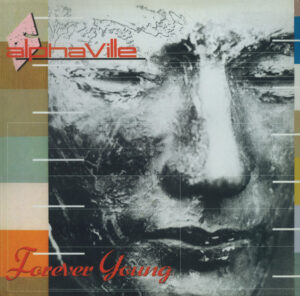 Fronted by Marian Gold, German trio ALPHAVILLE broke through in the UK with a Zeus B Held remix of ‘Big In Japan’ and while that particular version is not included on the ‘Forever Young’ album, the original mix held its own alongside songs like ‘Sound Like A Melody’ and ‘Fallen Angel’. Meanwhile, the poignant title song has since become an evergreen anthem borrowed by the likes of THE KILLERS and JAY-Z!
Fronted by Marian Gold, German trio ALPHAVILLE broke through in the UK with a Zeus B Held remix of ‘Big In Japan’ and while that particular version is not included on the ‘Forever Young’ album, the original mix held its own alongside songs like ‘Sound Like A Melody’ and ‘Fallen Angel’. Meanwhile, the poignant title song has since become an evergreen anthem borrowed by the likes of THE KILLERS and JAY-Z!
‘Forever Young’ is still available via Warner Music
THE ART OF NOISE Who’s Afraid Of?
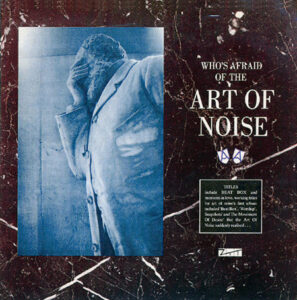 From the off, THE ART OF NOISE were rattling cages. ‘Beat Box’ was the track which scared KRAFTWERK enough for them to delay the release of their ‘Technopop’ album and rework it as the underwhelming ‘Electric Cafe’. The crazy staccato sample cacophony of ‘Close (To The Edit)’ which was later borrowed by THE PRODIGY for ‘Firestarter’ still sounds as fresh and mad as ever while ‘Moments In Love’ heralded a new age in mood music.
From the off, THE ART OF NOISE were rattling cages. ‘Beat Box’ was the track which scared KRAFTWERK enough for them to delay the release of their ‘Technopop’ album and rework it as the underwhelming ‘Electric Cafe’. The crazy staccato sample cacophony of ‘Close (To The Edit)’ which was later borrowed by THE PRODIGY for ‘Firestarter’ still sounds as fresh and mad as ever while ‘Moments In Love’ heralded a new age in mood music.
‘Who’s Afraid Of?’ is still available via ZTT
https://www.facebook.com/artofnoiseofficial/
BLANCMANGE Mange Tout
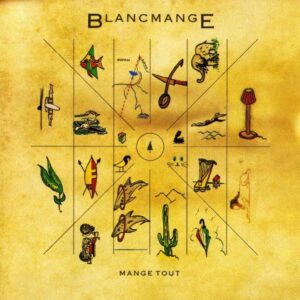 On the back of hit singles in ‘Blind Vision’, ‘That’s Love That It Is’ and ‘Don’t Tell Me’, the brilliantly titled second BLANCMANGE album ‘Mange Tout’ became their biggest seller. Another surprise came with a melodramatic cover of ABBA’s ‘The Day Before You Came’; considered an odd but daring decision at the time, it was something of a cultural prophecy with ABBA now fully reabsorbed into mainstream popular culture.
On the back of hit singles in ‘Blind Vision’, ‘That’s Love That It Is’ and ‘Don’t Tell Me’, the brilliantly titled second BLANCMANGE album ‘Mange Tout’ became their biggest seller. Another surprise came with a melodramatic cover of ABBA’s ‘The Day Before You Came’; considered an odd but daring decision at the time, it was something of a cultural prophecy with ABBA now fully reabsorbed into mainstream popular culture.
‘Mange Tout’ is still available via Edsel Records
THE BLUE NILE A Walk Across The Rooftops
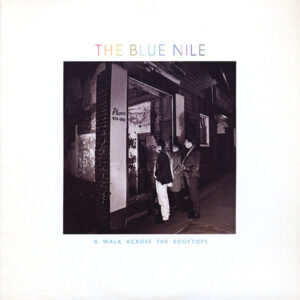 Glum Scottish trio THE BLUE NILE had an innovative deal with Linn, the Glasgow-based high quality Hi-Fi manufacturer where their crisply produced debut ‘A Walk Across The Rooftops’ as used by dealers to demonstrate the sonic range of their products. ‘Tinseltown In The Rain’ and ‘Stay’ got BBC Radio1 airplay and while they were not hits, the artful album became a favourite among the cognoscenti and other musicians.
Glum Scottish trio THE BLUE NILE had an innovative deal with Linn, the Glasgow-based high quality Hi-Fi manufacturer where their crisply produced debut ‘A Walk Across The Rooftops’ as used by dealers to demonstrate the sonic range of their products. ‘Tinseltown In The Rain’ and ‘Stay’ got BBC Radio1 airplay and while they were not hits, the artful album became a favourite among the cognoscenti and other musicians.
‘A Walk Across the Rooftops’ is still available via Confetti Records
https://www.facebook.com/TheBlueNileOfficial
BRONSKI BEAT The Age Of Consent
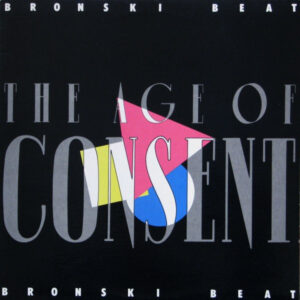 When BRONSKI BEAT first appeared, they were nothing short of startling, thanks to their look, melodic synth sound and Jimmy Somerville’s lonely earth shattering falsetto. ‘The Age Of Consent’ used their position as openly gay performers to make important statements such as ‘Smalltown Boy’, ‘Why’ and ‘Need A Man Blues’ as well as the anti-consumerist ‘Junk’ and the self-explanatory protest song ‘No More War’.
When BRONSKI BEAT first appeared, they were nothing short of startling, thanks to their look, melodic synth sound and Jimmy Somerville’s lonely earth shattering falsetto. ‘The Age Of Consent’ used their position as openly gay performers to make important statements such as ‘Smalltown Boy’, ‘Why’ and ‘Need A Man Blues’ as well as the anti-consumerist ‘Junk’ and the self-explanatory protest song ‘No More War’.
‘The Age Of Consent’ is still available via London Records
https://www.facebook.com/officialjimmysomerville
CABARET VOLTAIRE Micro-Phonies
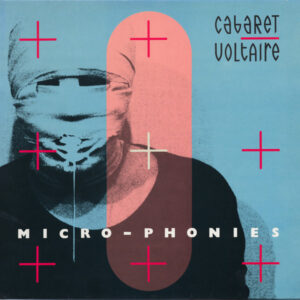 Featuring the blissful ‘Sensoria’, the second Some Bizzare long playing adventure of CABARET VOLTAIRE saw Stephen Mallinder and Richard H Kirk at possibly their most accessible yet while still remaining alternative. With a Fairlight CMI now taking over from the previous tape experiments alongside the punchy rhythmic backdrop, tracks like ‘Do Right’ and ‘Slammer’ exemplified their alternative club direction.
Featuring the blissful ‘Sensoria’, the second Some Bizzare long playing adventure of CABARET VOLTAIRE saw Stephen Mallinder and Richard H Kirk at possibly their most accessible yet while still remaining alternative. With a Fairlight CMI now taking over from the previous tape experiments alongside the punchy rhythmic backdrop, tracks like ‘Do Right’ and ‘Slammer’ exemplified their alternative club direction.
‘Micro-Phonies’ is still available via Mute Artists
https://mute.com/artists/cabaret-voltaire
DEAD OR ALIVE Sophisticated Boom Boom
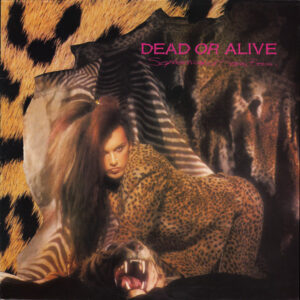 With Pete Burns now looking more and more like Gina X, it was no big surprise that her producer Zeus B Held was helming DEAD OR ALIVE’s electronic disco direction. An energetic cover of KC & THE SUNSHINE BAND’s ‘That’s The Way’ was the hit breakthrough but there was also mighty sequencer dance tunes such as ‘Misty Circles’ and ‘What I Want’, as well as the Morrissey fronting ABBA serenity of ‘Far Too Hard’.
With Pete Burns now looking more and more like Gina X, it was no big surprise that her producer Zeus B Held was helming DEAD OR ALIVE’s electronic disco direction. An energetic cover of KC & THE SUNSHINE BAND’s ‘That’s The Way’ was the hit breakthrough but there was also mighty sequencer dance tunes such as ‘Misty Circles’ and ‘What I Want’, as well as the Morrissey fronting ABBA serenity of ‘Far Too Hard’.
‘Sophisticated Boom Boom’ is still available via Cherry Pop
https://www.discogs.com/artist/46720-Dead-Or-Alive
DEPECHE MODE Some Great Reward
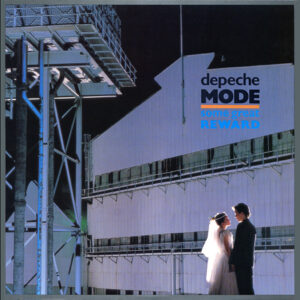 Despite more adult songs with S&M metaphors about capitalism and doubts about religion, ‘Some Great Reward’ was the last innocent DEPECHE MODE album. With Gareth Jones now taking on a co-production role with Daniel Miller, the sampling experimentation was honed into the powerful metallic pop of ‘Something To Do’, ‘Master & Servant’, ‘If You Want’ and ‘Blasphemous Rumours’ while there was also the sensitive piano ballad ‘Somebody’.
Despite more adult songs with S&M metaphors about capitalism and doubts about religion, ‘Some Great Reward’ was the last innocent DEPECHE MODE album. With Gareth Jones now taking on a co-production role with Daniel Miller, the sampling experimentation was honed into the powerful metallic pop of ‘Something To Do’, ‘Master & Servant’, ‘If You Want’ and ‘Blasphemous Rumours’ while there was also the sensitive piano ballad ‘Somebody’.
‘Some Great Reward’ is still available via Sony Music
FRANKIE GOES TO HOLLYWOOD Welcome To The Pleasure Dome
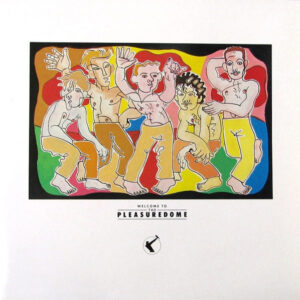 The Trevor Horn produced ‘Welcome To The Pleasure Dome’ was a double album that should have been edited down to a single record but that would have missed the point. Featuring three supreme UK No1 singles in ‘Relax’, ‘Two Tribes’ and ‘The Power Of Love’, FRANKIE GOES TO HOLLYWOOD had their place cemented in musical history, regardless of the radio bannings and controversial marketing stunts.
The Trevor Horn produced ‘Welcome To The Pleasure Dome’ was a double album that should have been edited down to a single record but that would have missed the point. Featuring three supreme UK No1 singles in ‘Relax’, ‘Two Tribes’ and ‘The Power Of Love’, FRANKIE GOES TO HOLLYWOOD had their place cemented in musical history, regardless of the radio bannings and controversial marketing stunts.
‘Welcome To The Pleasure Dome’ is still available via ZTT
ROBERT GÖRL Night Full Of Tension
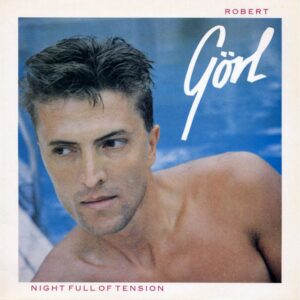 With songs like ‘Playtime’ and ‘Love In Mind’, Robert Görl took a cool escapist journey into synthpop on ‘Night Full Of Tension’ dominated by digital drum machines and sequencers. In a volte face from the DAF drummer, he exuded a relaxed English vocal style in the manner of Bryan Ferry and David Bowie. There were also additional vocal contributions from Annie Lennox on ‘Charlie Cat’ and the duet highlight ‘Darling Don’t Leave Me’.
With songs like ‘Playtime’ and ‘Love In Mind’, Robert Görl took a cool escapist journey into synthpop on ‘Night Full Of Tension’ dominated by digital drum machines and sequencers. In a volte face from the DAF drummer, he exuded a relaxed English vocal style in the manner of Bryan Ferry and David Bowie. There were also additional vocal contributions from Annie Lennox on ‘Charlie Cat’ and the duet highlight ‘Darling Don’t Leave Me’.
‘Night Full Of Tension’ is still available via Mute Records
HEAVEN 17 How Men Are
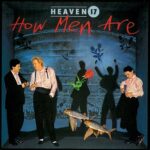 The success of ‘The Luxury Gap’ brought money into HEAVEN 17 and this was reflected in the orchestrally assisted Fairlight jamboree of ‘How Men Are’. “I think it’s an underrated album and that was when we were probably in our most daring and creative phase” said Martyn Ware and that manifested itself on the sub-ten minute closer ‘And That’s No Lie’ and the outstanding Doomsday Clock referencing opener ‘Five Minutes To Midnight’.
The success of ‘The Luxury Gap’ brought money into HEAVEN 17 and this was reflected in the orchestrally assisted Fairlight jamboree of ‘How Men Are’. “I think it’s an underrated album and that was when we were probably in our most daring and creative phase” said Martyn Ware and that manifested itself on the sub-ten minute closer ‘And That’s No Lie’ and the outstanding Doomsday Clock referencing opener ‘Five Minutes To Midnight’.
‘How Men Are’ is still available via Virgin Records
JEAN-MICHEL JARRE Zoolook
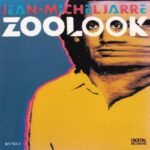 Having been an early adopter of the Fairlight CMI on ‘Magnetic Fields’, Jean-Michel Jarre utilised it further to create an instrumental palette sampled from 25 spoken languages on ‘Zoolook’. It also saw the use of notable musicians including Marcus Miller, Yogi Horton, Adrian Belew and Laurie Anderson who lent her voice to the delightfully oddball ‘Diva’. The magnificent highlight was the 11 minute ‘Ethnicolour’.
Having been an early adopter of the Fairlight CMI on ‘Magnetic Fields’, Jean-Michel Jarre utilised it further to create an instrumental palette sampled from 25 spoken languages on ‘Zoolook’. It also saw the use of notable musicians including Marcus Miller, Yogi Horton, Adrian Belew and Laurie Anderson who lent her voice to the delightfully oddball ‘Diva’. The magnificent highlight was the 11 minute ‘Ethnicolour’.
‘Zoolook’ is still available via Sony Music
https://www.jeanmicheljarre.com/
HOWARD JONES Human’s Lib
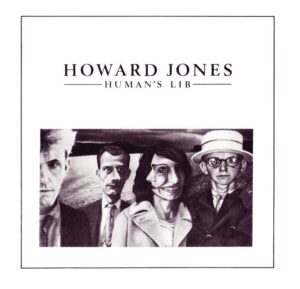 ‘Human’s Lib’ was the beginning of Howard Jones’ imperial phase, with four hit singles ‘New Song’, ‘What Is Love?’, ‘Hide And Seek’ and ‘Pearl In The Shell’ included on this immediate debut. But there was quality in the other songs with ‘Equality’ sounding like an arrangement blue print for A-HA’s ‘Take On Me’ and the title song about Ruth, David and Dennis touching on the complexities of love triangles!
‘Human’s Lib’ was the beginning of Howard Jones’ imperial phase, with four hit singles ‘New Song’, ‘What Is Love?’, ‘Hide And Seek’ and ‘Pearl In The Shell’ included on this immediate debut. But there was quality in the other songs with ‘Equality’ sounding like an arrangement blue print for A-HA’s ‘Take On Me’ and the title song about Ruth, David and Dennis touching on the complexities of love triangles!
‘Human’s Lib’ is still available via Cherry Red Records
GARY NUMAN Berserker
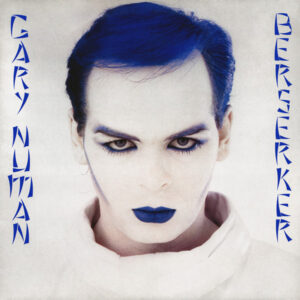 After the jazzier overtones of ‘Warriors’, ‘Berserker’ was conceived as “a science alternative album” by Gary Numan and therefore much more of an electronic proposition. Dominated by the PPG Wave system which had been the heartbeat of FRANKIE GOES TO HOLLYWOOD, ‘My Dying Machine’ pumped like ‘Relax’ while the rhythmic title song and the exotic ‘Cold Warning’ provided other highlights.
After the jazzier overtones of ‘Warriors’, ‘Berserker’ was conceived as “a science alternative album” by Gary Numan and therefore much more of an electronic proposition. Dominated by the PPG Wave system which had been the heartbeat of FRANKIE GOES TO HOLLYWOOD, ‘My Dying Machine’ pumped like ‘Relax’ while the rhythmic title song and the exotic ‘Cold Warning’ provided other highlights.
‘Berserker’ is still available via Eagle Records
OMD Junk Culture
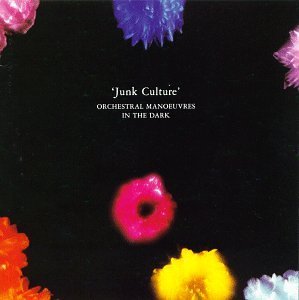 With its embracement of calypso, reggae, indie and mainstream pop, ‘Junk Culture’ was perhaps even more experimental than ‘Dazzle Ships’ and took OMD outside of the Germanic sound laboratory they had emerged from. Known for two slightly inane hits, ‘Locomotion’ put them back into the UK Top5 while ‘Talking Loud & Clear’ only just missed out on the Top10. However, the best single from the album ‘Tesla Girls’ stalled at No21!
With its embracement of calypso, reggae, indie and mainstream pop, ‘Junk Culture’ was perhaps even more experimental than ‘Dazzle Ships’ and took OMD outside of the Germanic sound laboratory they had emerged from. Known for two slightly inane hits, ‘Locomotion’ put them back into the UK Top5 while ‘Talking Loud & Clear’ only just missed out on the Top10. However, the best single from the album ‘Tesla Girls’ stalled at No21!
‘Junk Culture’ is still available via Universal Music
SECTION 25 From The Hip
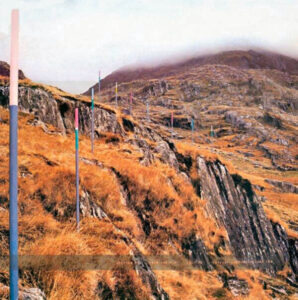 Co-produced by Bernard Sumner of NEW ORDER, ‘From The Hip’ followed founder member Larry Cassidy’s statement that “you can’t be a punk all your life”. Recruiting vocalist Jenny Ross and keyboardist Angela Cassidy, ‘Looking From A Hilltop’ with its clattering drum machine, pulsing hypnotism and ominous synth lines was the album’s standout while ‘Program For Light’ explored further electronic territory.
Co-produced by Bernard Sumner of NEW ORDER, ‘From The Hip’ followed founder member Larry Cassidy’s statement that “you can’t be a punk all your life”. Recruiting vocalist Jenny Ross and keyboardist Angela Cassidy, ‘Looking From A Hilltop’ with its clattering drum machine, pulsing hypnotism and ominous synth lines was the album’s standout while ‘Program For Light’ explored further electronic territory.
‘From The Hip’ is still available via Factory Benelux
SOFT CELL This Last Night In Sodom
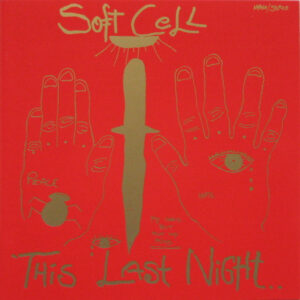 If ‘The Art Of Falling Apart’ was the difficult second SOFT CELL album, ‘This Last Night In Sodom’ was an even more challenging proposition with some tracks even mixed in mono! The thundering percussive cover of ‘Down In The Subway’ was a metaphor for Marc Almond’s mental state while ‘L’ Esqualita’ provided some fabulous gothic menace alongside the frenetic rush of ‘Soul Inside’, all aided by Dave Ball and his PPG Wave 2.2.
If ‘The Art Of Falling Apart’ was the difficult second SOFT CELL album, ‘This Last Night In Sodom’ was an even more challenging proposition with some tracks even mixed in mono! The thundering percussive cover of ‘Down In The Subway’ was a metaphor for Marc Almond’s mental state while ‘L’ Esqualita’ provided some fabulous gothic menace alongside the frenetic rush of ‘Soul Inside’, all aided by Dave Ball and his PPG Wave 2.2.
‘This Last Night In Sodom’ is still available via Some Bizzare
TALK TALK It’s My Life
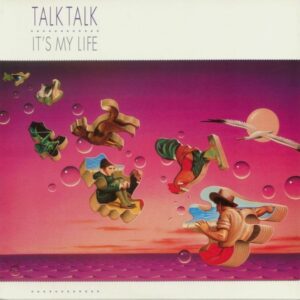 Now a trio, the second TALK TALK album saw them work with producer Tim Friese-Greene who would also have a songwriting role alongside Mark Hollis. Still reliant on synthesizers for its aural template, the initial five song sequence from ‘Dum Dum Girl’ to ‘Tomorrow Started’ was superb, taking in the title song, the magnificent ‘Such A Shame’ and the emotive ballad ‘Renée’. It sold well in Europe but was largely ignored in the UK.
Now a trio, the second TALK TALK album saw them work with producer Tim Friese-Greene who would also have a songwriting role alongside Mark Hollis. Still reliant on synthesizers for its aural template, the initial five song sequence from ‘Dum Dum Girl’ to ‘Tomorrow Started’ was superb, taking in the title song, the magnificent ‘Such A Shame’ and the emotive ballad ‘Renée’. It sold well in Europe but was largely ignored in the UK.
‘It’s My Life’ is still available via EMI Music
https://www.facebook.com/talktalkfans
THOMPSON TWINS Into The Gap
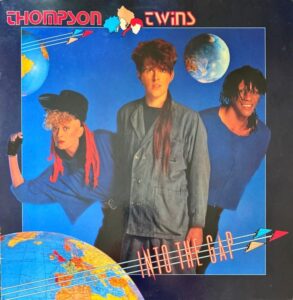 Following their breakthrough record ‘Quick Step & Side Kick’, ‘Into The Gap’ was the most commercially successful THOMPSON TWINS studio album, putting the quirky trio into the US Top10. With Tom Bailey now taking on a co-producer role alongside Alex Sadkin, it featured the megahits ‘Hold Me Now’ and ‘Doctor Doctor’ while the neo-title song ‘The Gap’ offered an Eastern flavoured take on ‘Trans-Europe Express’.
Following their breakthrough record ‘Quick Step & Side Kick’, ‘Into The Gap’ was the most commercially successful THOMPSON TWINS studio album, putting the quirky trio into the US Top10. With Tom Bailey now taking on a co-producer role alongside Alex Sadkin, it featured the megahits ‘Hold Me Now’ and ‘Doctor Doctor’ while the neo-title song ‘The Gap’ offered an Eastern flavoured take on ‘Trans-Europe Express’.
‘Into The Gap’ is still available via Edsel Records
http://www.thompsontwinstombailey.com/
ULTRAVOX Lament
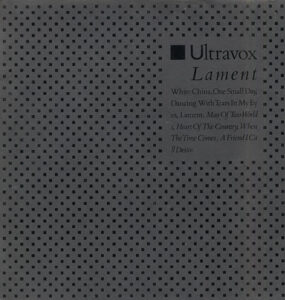 With self-produced sessions in the Musicfest home studio of Midge Ure, there were more obviously programmed rhythm tracks than previously while tracks ranged from the earnest rock of ‘One Small Day’ to the sequencer-driven ‘White China’. The apocalyptic Michael Rother influenced ‘Dancing With Tears In My Tears’ that gave ULTRAVOX with their biggest hit since ‘Vienna’ although the Celtic overtures of ‘Man Of Two Worlds’ was the album’s best song.
With self-produced sessions in the Musicfest home studio of Midge Ure, there were more obviously programmed rhythm tracks than previously while tracks ranged from the earnest rock of ‘One Small Day’ to the sequencer-driven ‘White China’. The apocalyptic Michael Rother influenced ‘Dancing With Tears In My Tears’ that gave ULTRAVOX with their biggest hit since ‘Vienna’ although the Celtic overtures of ‘Man Of Two Worlds’ was the album’s best song.
‘Lament’ is still available via Chrysalis Records
Text by Chi Ming Lai
24th February 2024

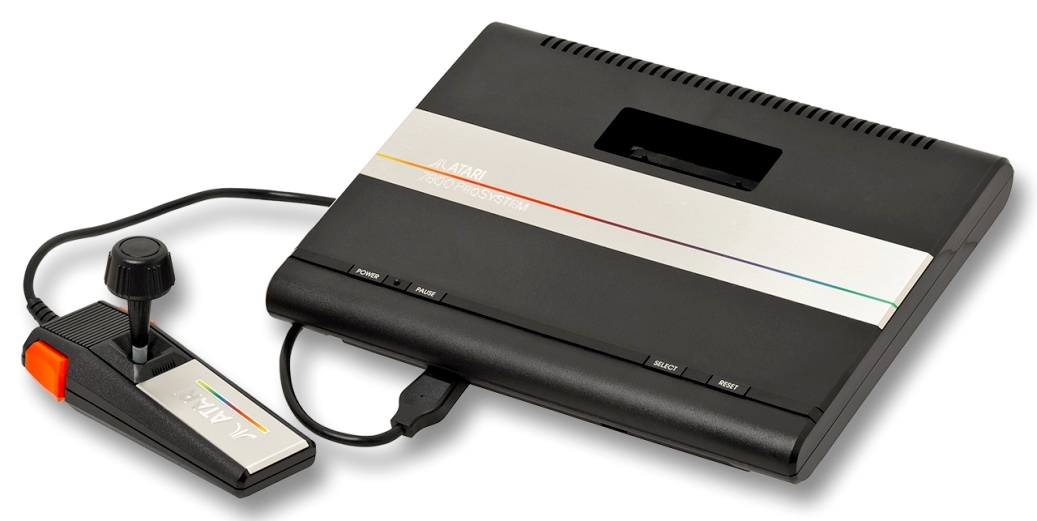
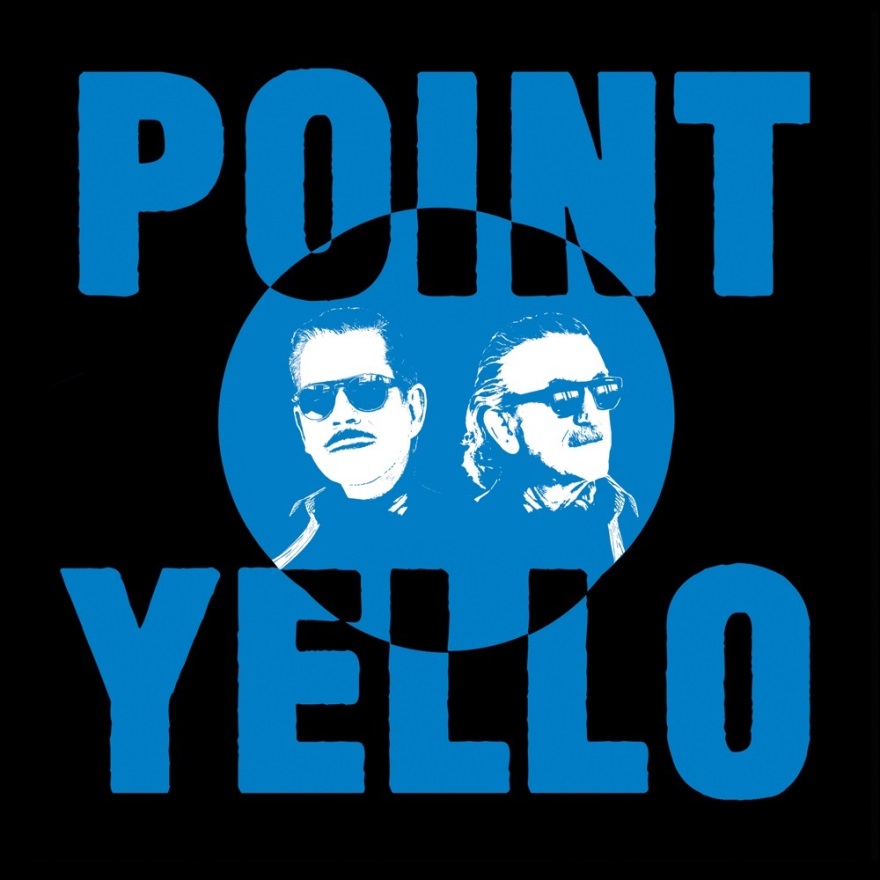
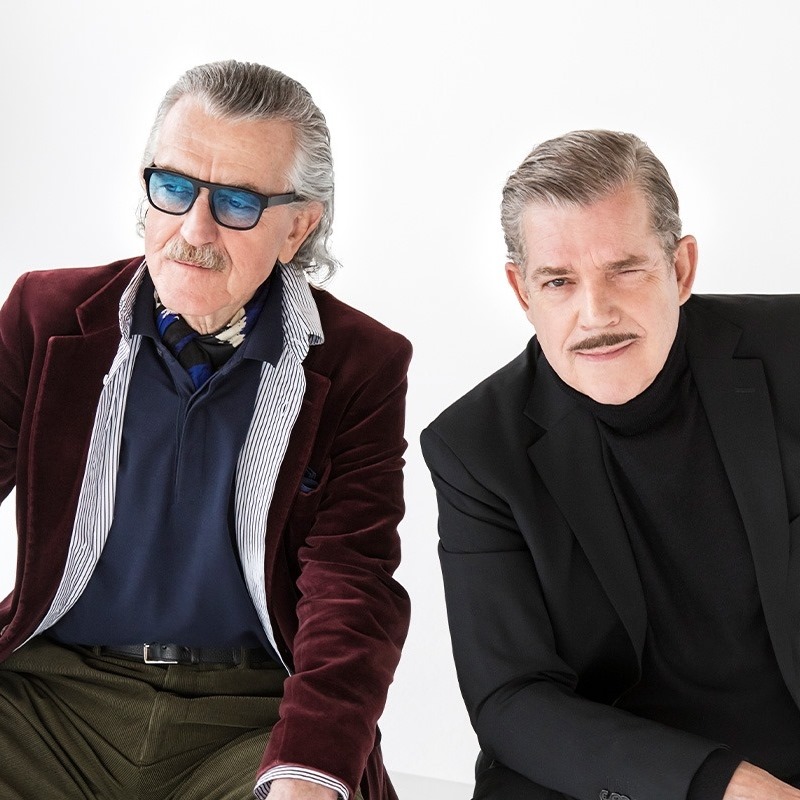
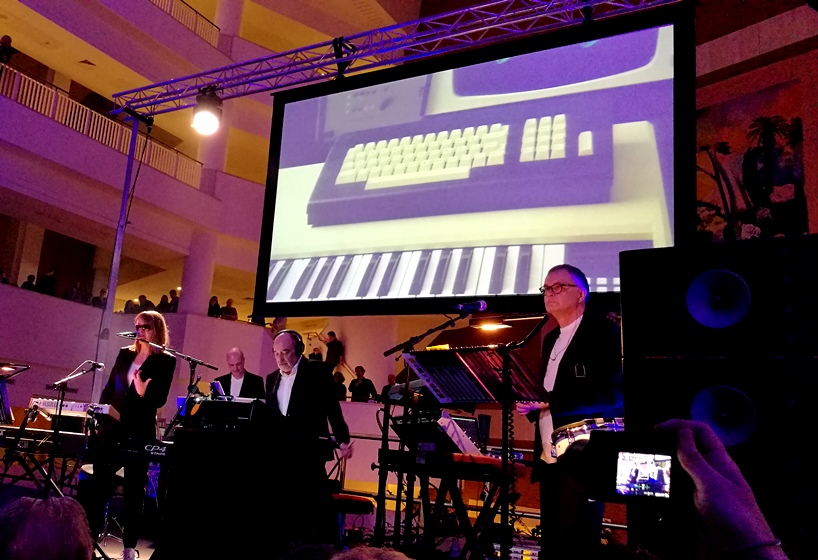
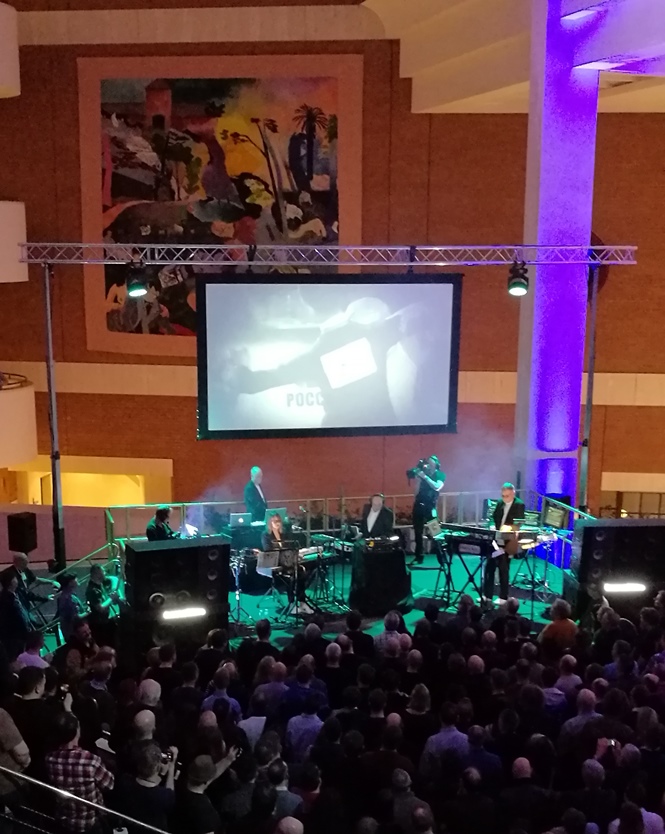
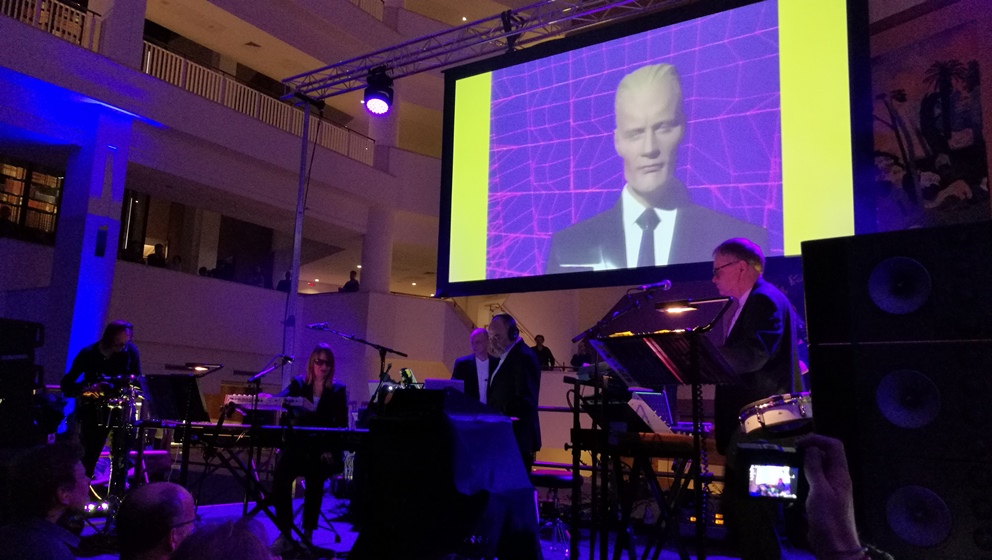
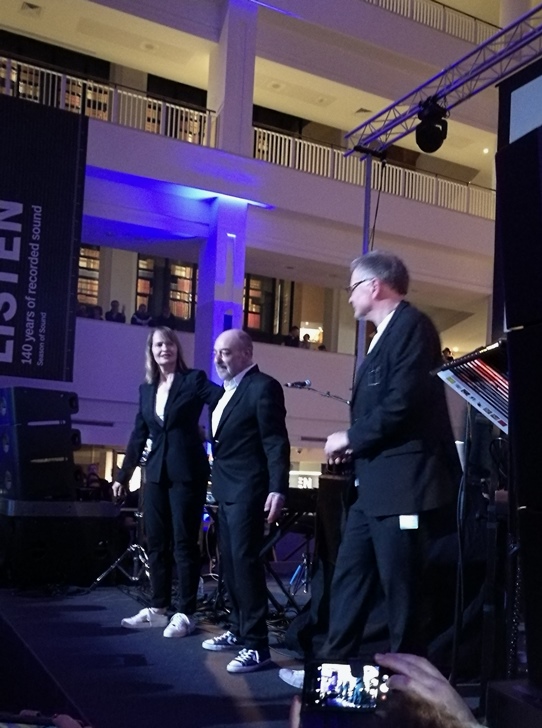
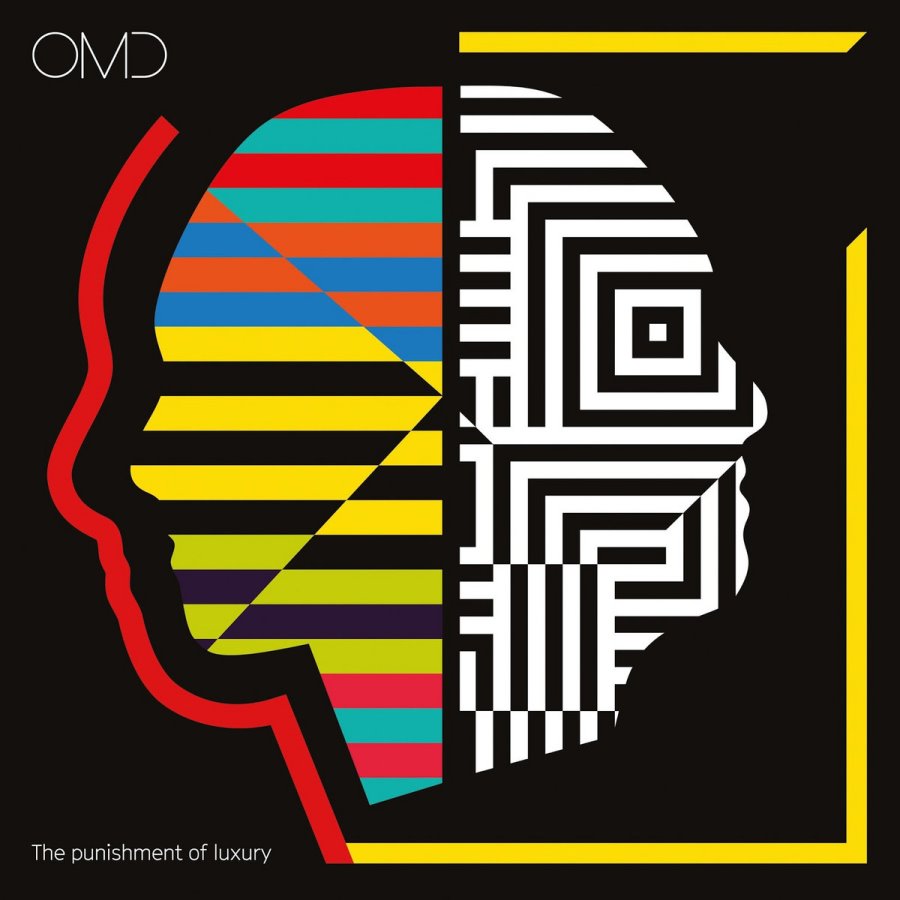
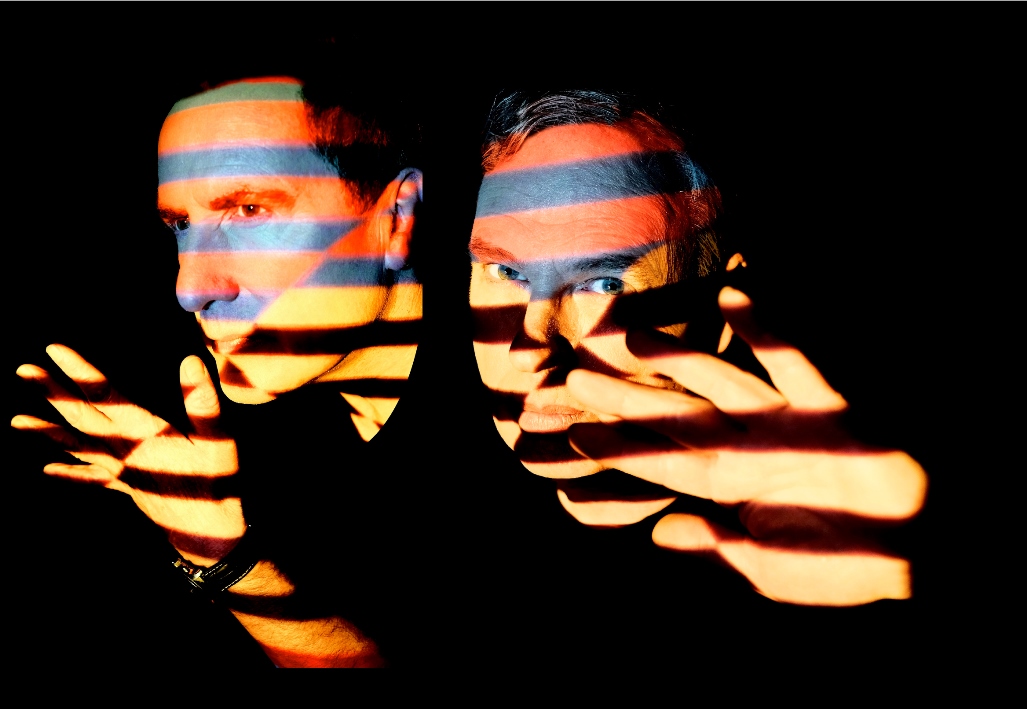
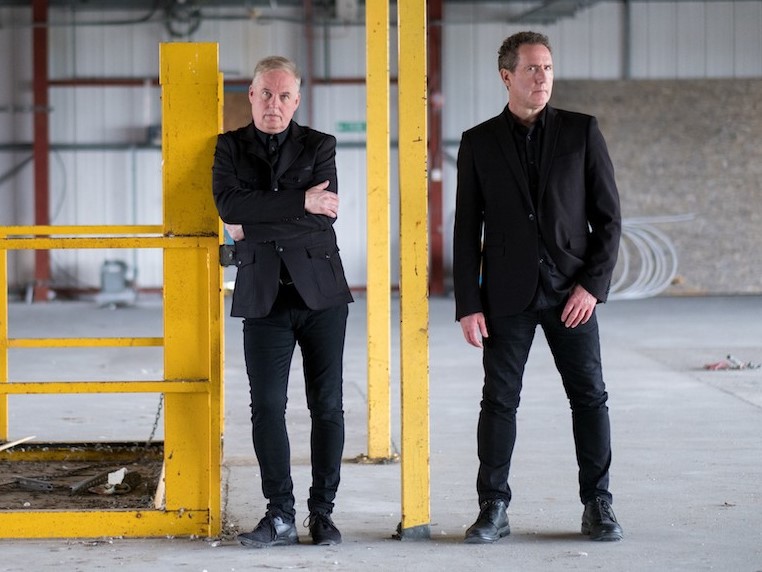
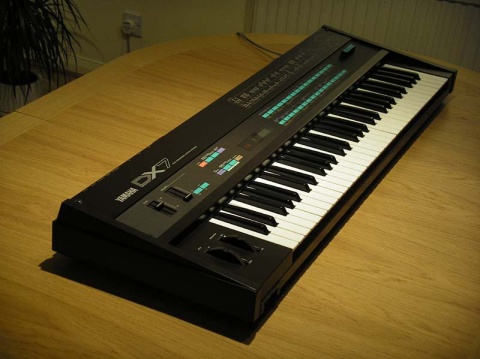

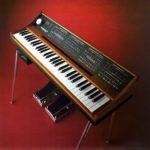
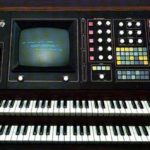
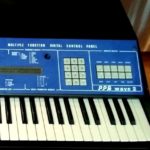
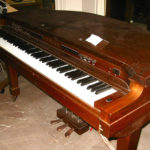
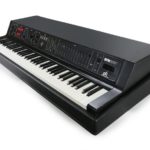
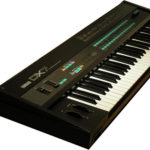
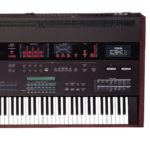
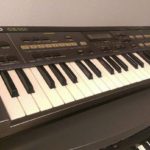
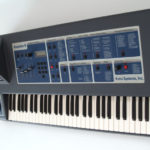
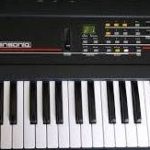
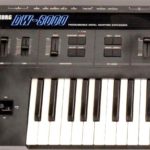
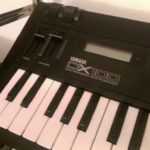
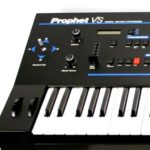
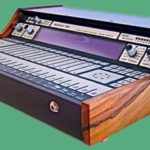
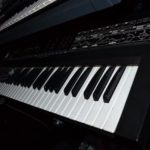
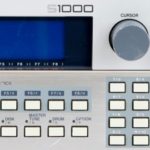
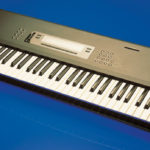
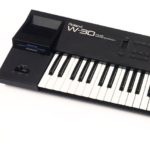
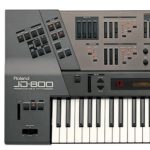
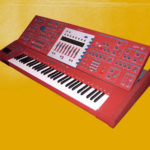
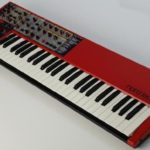
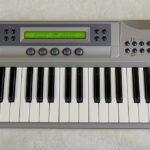
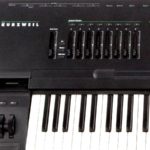
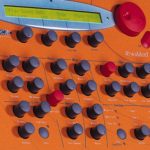
Follow Us!